Image may be NSFW.
Clik here to view.
British Land were responsible for the destruction of the northern half of Elder St in the seventies
A famous battle took place here forty years ago between British Land, who wanted to create a large-scale commercial development at the edge of the City, and Conservationists, who believed that there was merit in the existing buildings, both architecturally and as social history – and that people still wanted to live here, given the chance.
Half of one of London’s most beautiful early Georgian streets was demolished before the destruction was halted by a group of young architectural historians, of whom Dan Cruickshank was one. They occupied the buildings to stop the bulldozers and with the support of Sir John Betjeman, then poet laureate, drew national press attention. British Land did not get their way, retreating after they were refused planning consent and the Spitalfields Historic Buildings Trust was born – in a seminal moment – as the tide of public opinion turned away from needless destruction and towards preservation of old buildings.
Now British Land are back and again they want to create a large-scale commercial development, combining a string of sites in this corner of the Liberty of Norton Folgate, which they choose to rebrand as ‘Blossom St.’ Consequently, Writer and Historian Dan Cruickshank, who has lived in Elder St since 1977, faces the unwelcome return of an old enemy to his own doorstep. “They’ve come back and maybe it’s new people at British Land but nothing’s changed – these guys don’t care about anything but money,” Dan assured me when I dropped by to visit him yesterday and we took a stroll around the streets under threat.
To add insult to injury, Dan and many other local residents attended a recent consultation which – as is too frequently the case - turned out to be a consultation in name only, at which British Land and the architects vehemently resisted any genuine debate. “It was simply the presentation of a worked-out design – with the public’s role being to comment on a strategy and details already decided,” Dan admitted to me in disappointment, “British Land, in response to our questioning of the very nature and purpose of the meeting, stated that we could scribble down our thoughts and post them in a box at one end of the room!”
There is a distinctive quality to this ancient web of streets at the edge of Spitalfields, justifying its designation as a Conservation Area. Behind an appealing mixed terrace of shops – a rare fragment of those that formerly lined Bishopsgate – lie old washhouses and yards, indicative of the courtyards and alleys that once laced this area with crowded housing. At the north of this terrace is the fine art deco faience facade of Nicholls & Clarke and a paved alley with worn flags, that appears unchanged since the nineteenth century, leading you back to Spitalfields. At the rear of terrace lies Blossom St, a quiet back street overhung with tall dark brick buildings dated 1886 and formerly in service as warehouses, but possessing large windows suggesting an earlier use for unspecified manufacturing. In between here and Elder St, sits a crude pastiche Georgian block constructed as a bad compromise in the seventies, after the genuine old buildings here were pointlessly demolished.
British Land has employed five architects to work upon different parts of their scheme as a means to introduce diversity, yet they have all come up with mediocre generic designs that betray their primary concern with fulfilling the economic demand of delivering the maximum volume.
They wish to reduce the 1886 warehouse buildings to a mere facade simply for the sake of maximising floor space and destroying their greater value, if repaired, as prestige offices for the Tech firms that have proliferated over the last decade in the former industrial premises of Shoreditch. On Bishopsgate, the art deco facade will be destroyed entirely and they intend to compromise the old brick terraces and dissolve the corner of Folgate St in order to create an entrance to their ‘Blossom St’ development without any respect for the wider architectural geometry of the existing streetscape. Meanwhile, the unspecified nature of the replacement for the block on the western side of Folgate St remains a vexed question and all this damage to the Conservation Area exists within the context of vast swathes of demolition of old buildings.
Thus, the intricate detail of this neighbourhood that has evolved over centuries will be sacrificed for crude commercial development which serves nothing but the interests of capital, if no meaningful dialogue between British Land and the residents of Spitalfields is forthcoming.
The timbre of discourse to date may be characterised by a comment thrown away by the leading architect of the proposed scheme, Paul Monaghan, at a subsequent meeting to the ‘consutation.’ When asked about an adjoining site, he retorted disdainfully, “It’s up for development, along with everything else in your neighbourhood.”
Yet British Land’s disregard for history, both of the buildings and streets they plan to develop, and of the events that occurred here forty years ago could be their downfall. They need to get planning permission in September and move this scheme forward to satisfy their shareholders, but their imperious approach is provocative, inviting conflict – and there are those in Spitalfields who have fought this fight before and won.
Image may be NSFW.
Clik here to view.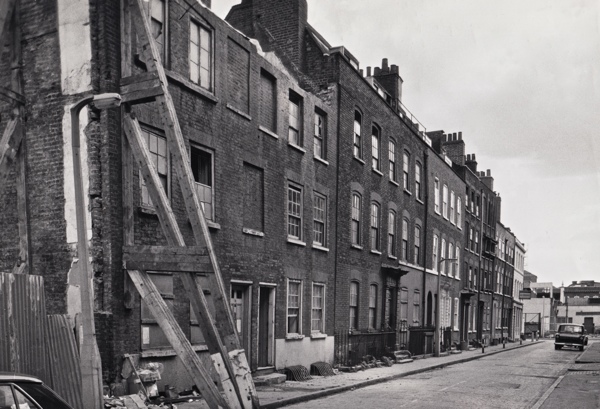
Elder St in 1977 after demolition commenced
Image may be NSFW.
Clik here to view.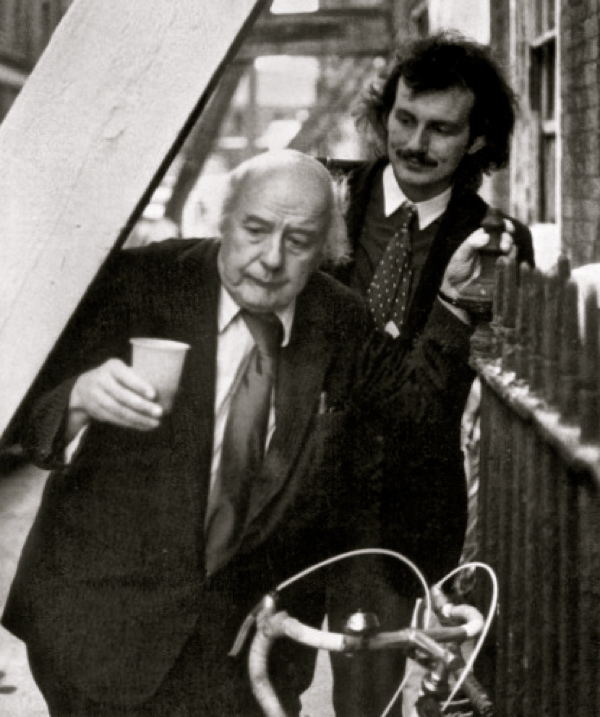
Dan Cruickshank shows the destruction to John Betjeman
Image may be NSFW.
Clik here to view.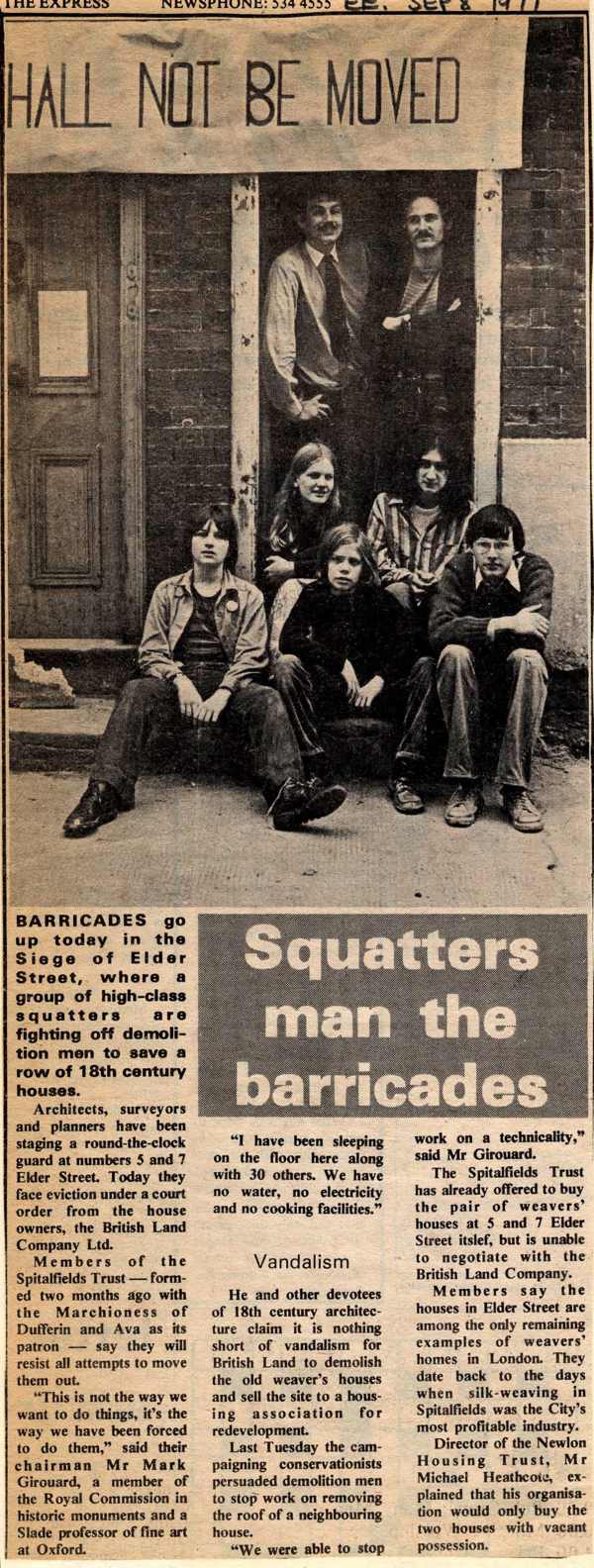
Image may be NSFW.
Clik here to view.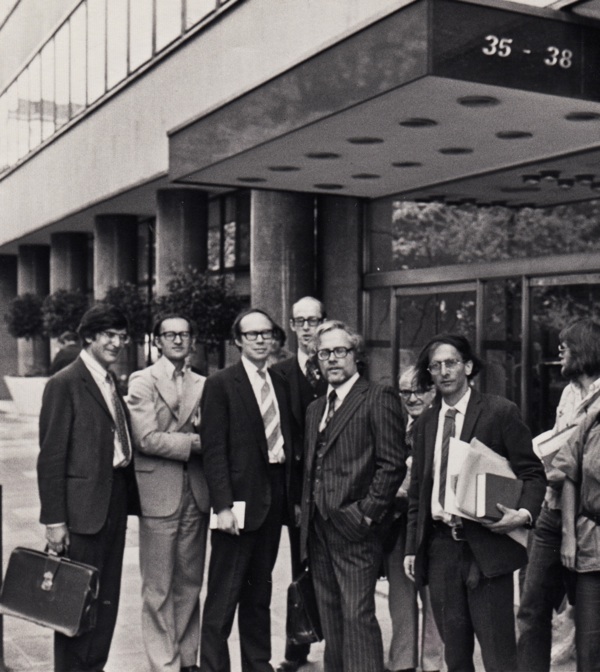
The deputation by Spitalfields Trust to occupy the headquarters of British Land, Mark Girouard stands centre with social historian Raphael Samuel, second from right.
Image may be NSFW.
Clik here to view.
Nineteenth century Nicholls & Clarke warehouses in Blossom St drawn by Lucinda Rogers
Image may be NSFW.
Clik here to view.
Tallis Street View of houses in Norton Folgate backing on to Blossom St – several are still standing
Image may be NSFW.
Clik here to view.
Image may be NSFW.
Clik here to view.
Image may be NSFW.
Clik here to view.
Image may be NSFW.
Clik here to view.
Image may be NSFW.
Clik here to view.
Image may be NSFW.
Clik here to view.
Image may be NSFW.
Clik here to view.
Image may be NSFW.
Clik here to view.
Image may be NSFW.
Clik here to view.
Image may be NSFW.
Clik here to view.
Image may be NSFW.
Clik here to view.
1811 Act for the paving of Norton Folgate including Blossom St – cobbles and paving date from this era
Image may be NSFW.
Clik here to view.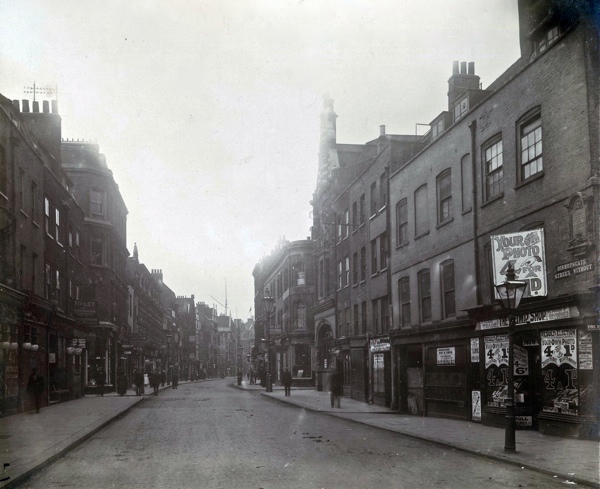
Bishopsgate Without viewed from Norton Folgate, 1912 (Photo by Charles Gosse)
Image may be NSFW.
Clik here to view.
Bishopsgate Without viewed from Norton Folgate, 2012
Colour photographs © Simon Mooney
Archive images courtesy Bishopsgate Institute